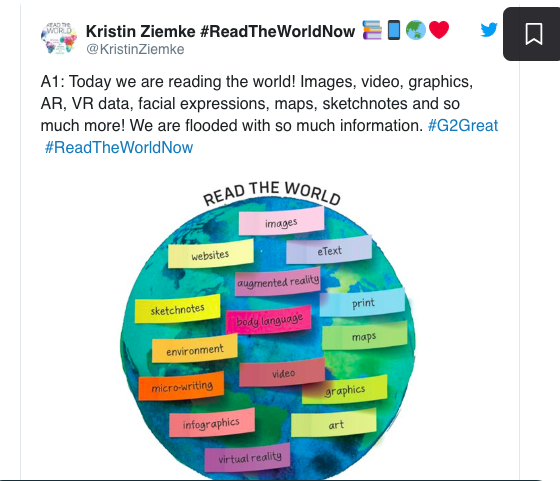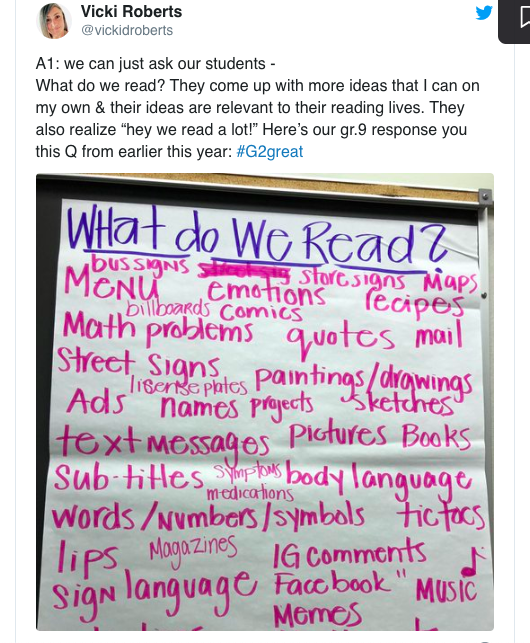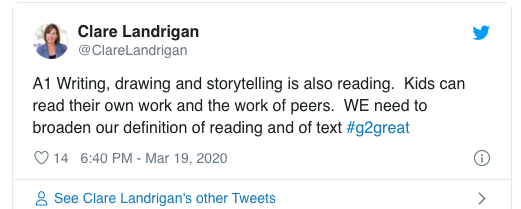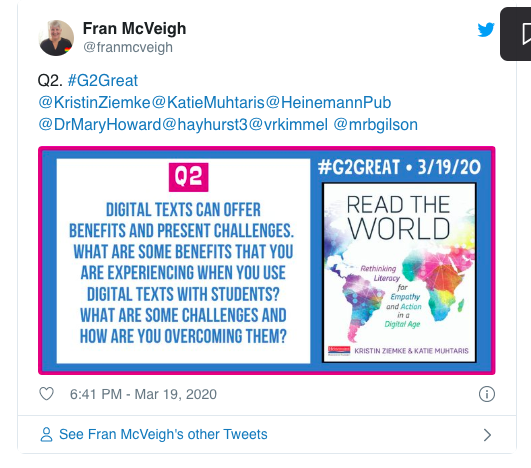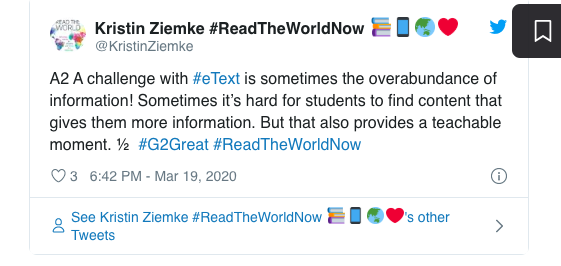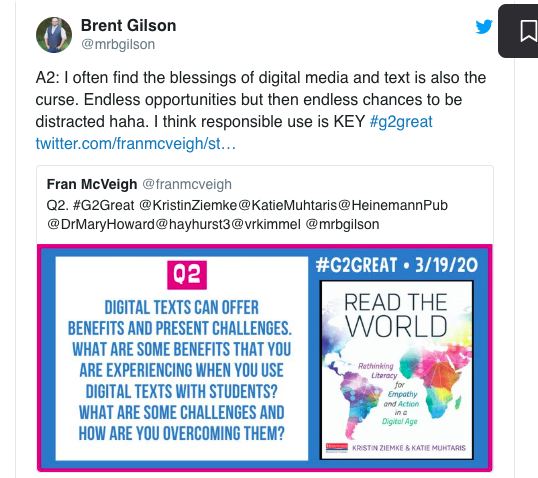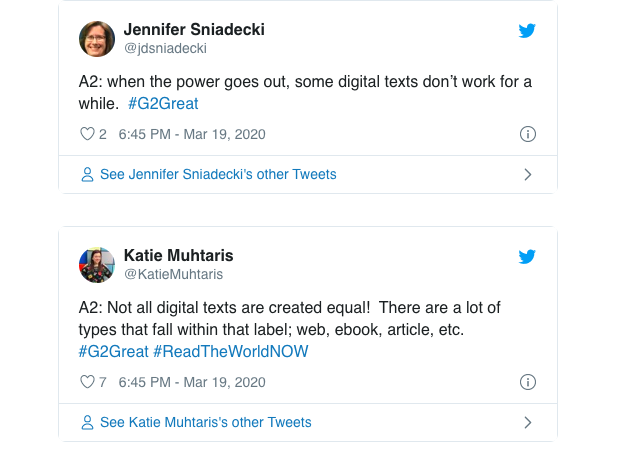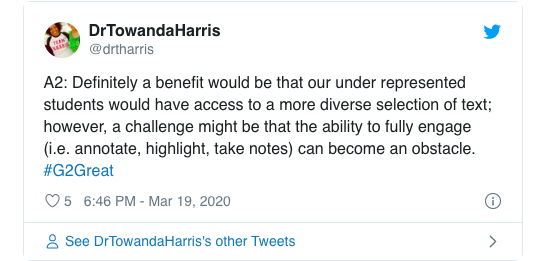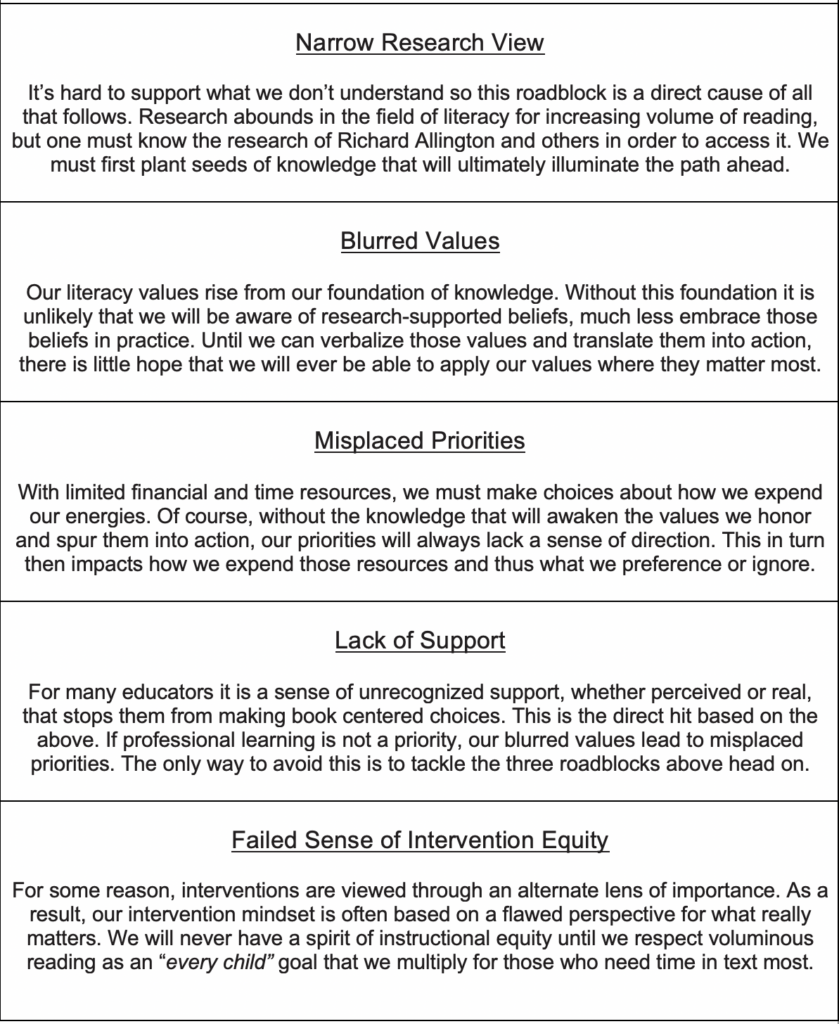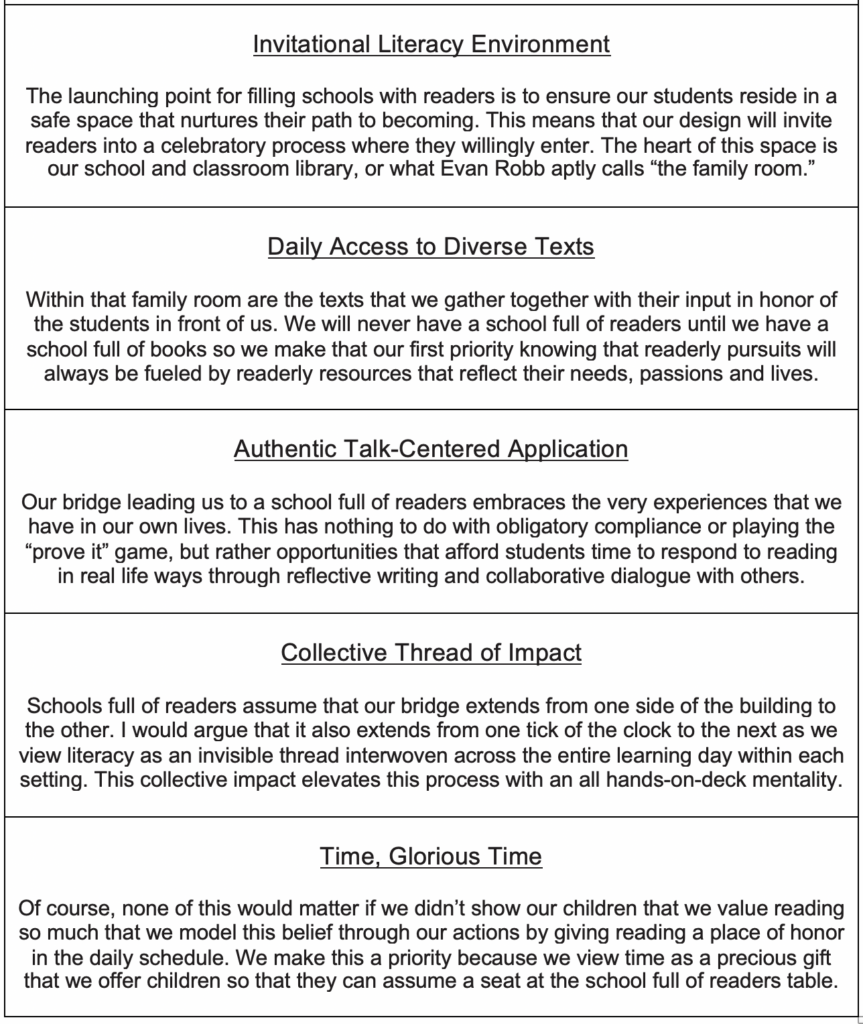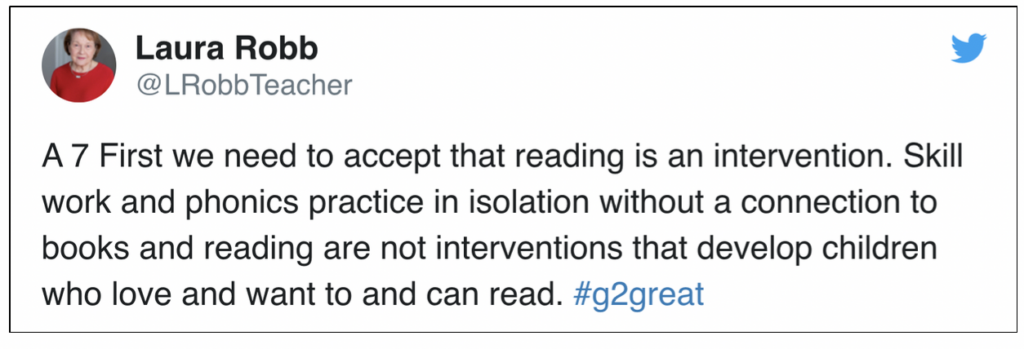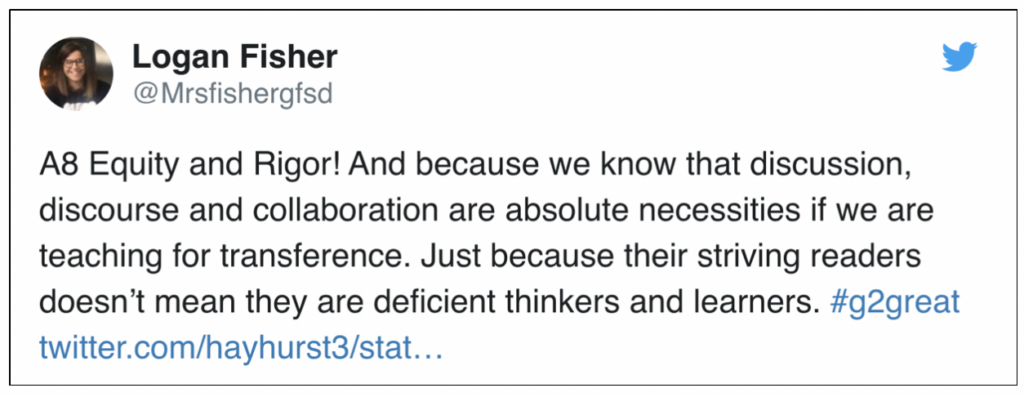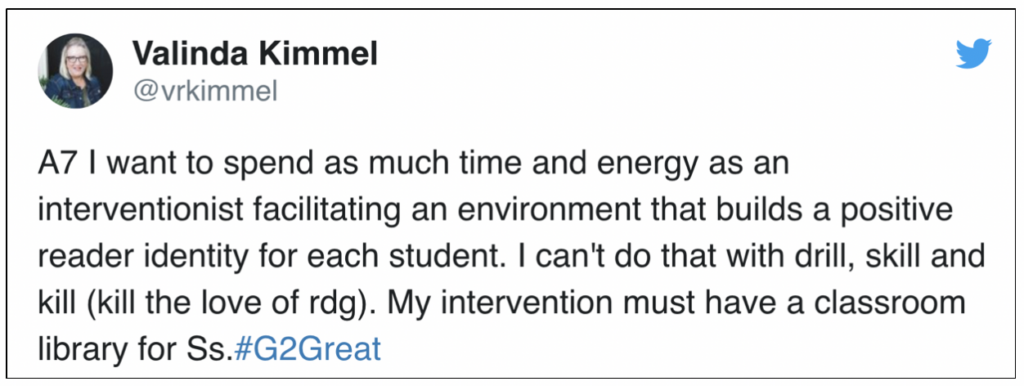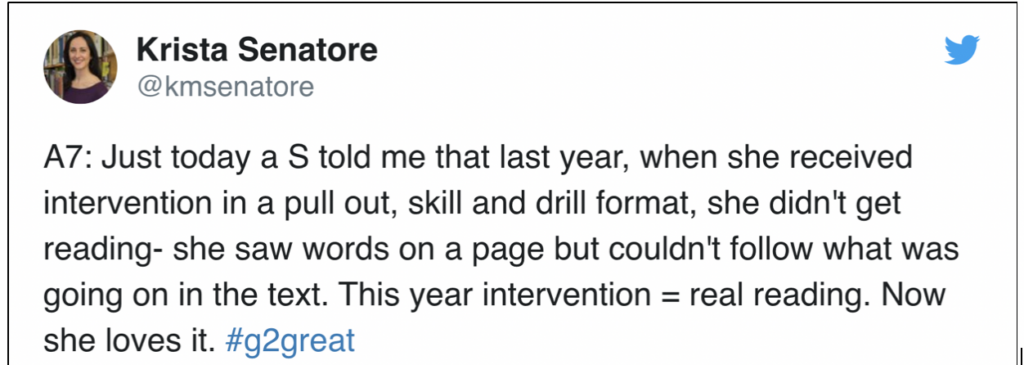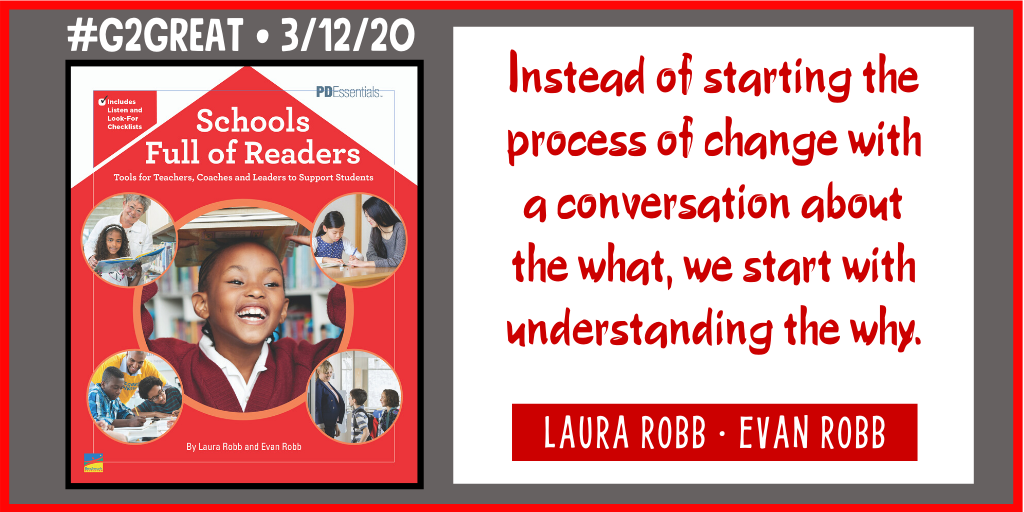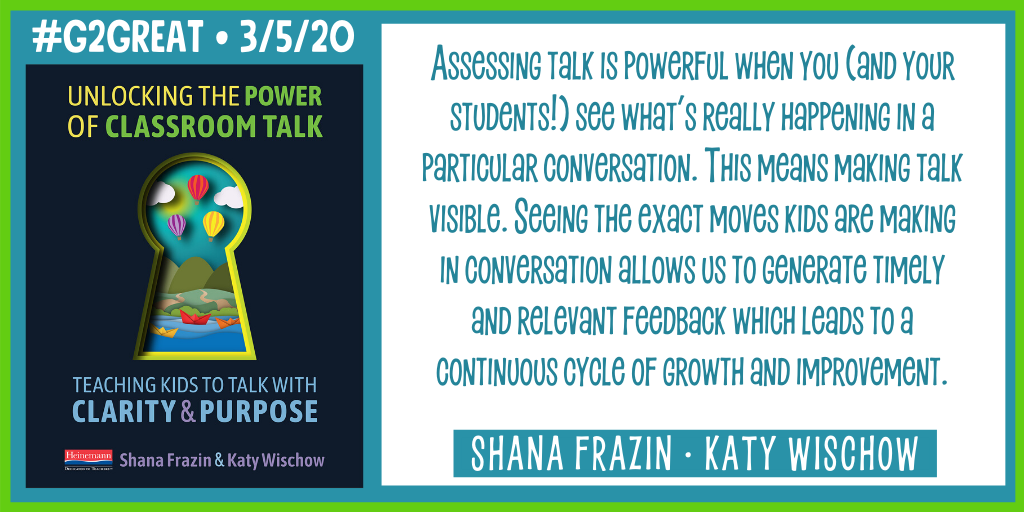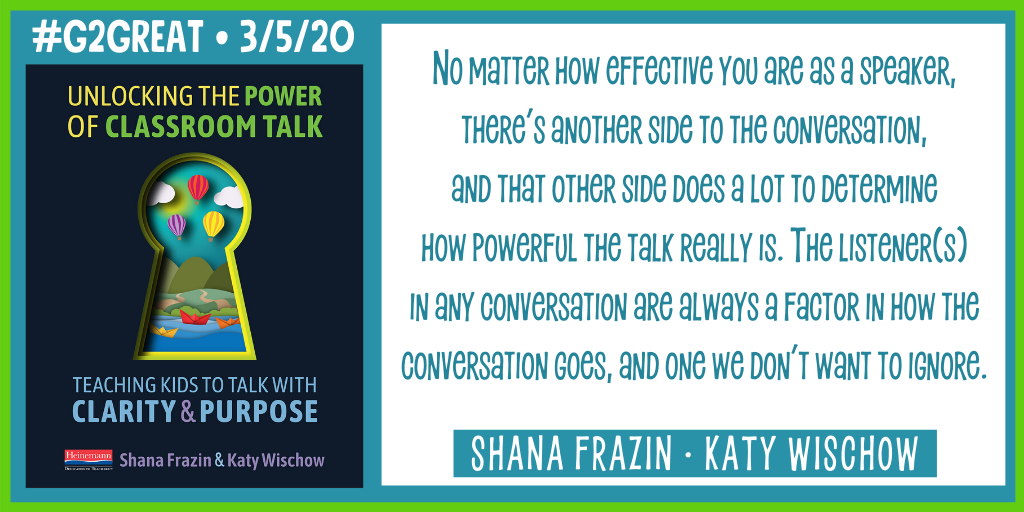by Brent Gilson
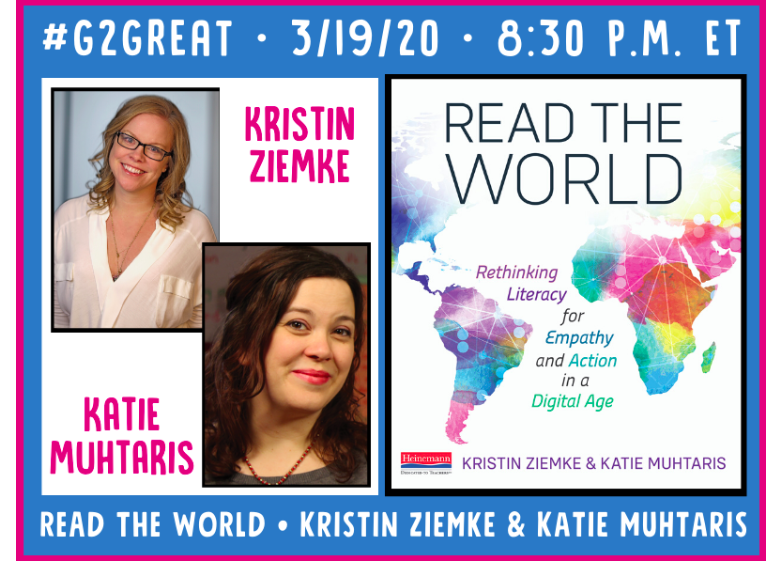
Please be sure to check out the chat archive on Wakelet here
Last week education in most of the world was disrupted like it has not been in my lifetime. Classes have come to a halt, students have been sent home and the idea of “remote teaching” has taken centre stage. I think back to so many of my friends lamenting the fact that they did not get the chance to send books home with their students. Worried about their access to texts at home while they are kept from schools and libraries amid the shutdowns. I was “lucky” enough to have a chance to see my students one more time and help get books in their hands for what is looking like a very long break. If there is anything that this crisis, and it is one, is going to force us in education to do is look at the “HOW” very differently. In that vein this week on the #G2Great chat we welcomed Kristin Ziemke and Katie Muhtaris and discussed their Book, Reading the World: Rethinking Literacy for Empathy and Action in a Digital Age.
1) What motivated you to write this book? What impact did you hope that it would have in the professional world?This book is really the synthesis of a lot of our work from the last few years. It brings together our experiences as educators and staff developers, our new learning as professionals, and current trends in digital literacy. Our goal in our work is to find that bridge between the tech world and the non-tech world for teachers. We hope that teachers find it a source of affirmation of some of the great things they are already doing as well as find inspiration to try new things. We also hope that it challenges people to rethink how they’ve always approached their practice and to take some risks.
Before we can begin to talk about what literacy looks like in the digital age we needed to seek understanding of what it means to “read”
Reading is not what it was 20-30 years ago (sadly some still hold on to the fact that it is). In a world that is now shut down over a pandemic, we need to be willing to open our minds to what reading really is. The interpreting of text which can really include anything. As teachers and students move towards putting other forms of text to use we have to be prepared for the challenges that might pop up.
One concern that continues to pop up for me is equitable access. So many schools are going to remote teaching and learning at this time and we are all counting on access. Even just this week I have heard from parents and parents who are also teachers who are faced with the hurdle of one or two devices in a home. With 4 kids all assigned to use those devices to be successful what are they to do? We live in a rural area that at times has spotty internet. We are all going to be utilizing digital texts for students to read and responses will most likely also come in digital forms. Like we have noticed in the chat there are plenty of benefits but I think we often miss the concern of open access as not being everyone’s reality.
As we continue to look at ways to not only engage our students in reading, in whatever form that takes, we need to be mindful of not just access but also representation. I was so excited to see that Audible had opened up a library of audiobooks for students to access free to students. Sadly I am told the free catalogue is more limited to “classics” and more old white authors. Less representation. I am mindful in my own classroom to provide texts that students can see themselves in. Luckily my school division has a license to use a digital library that has many options that are both current and inclusive. Students can go into the resource from home and access both digital texts and audiobooks. This service does depend on access but students do get it for free so at least that removes one hurdle.
Students work in this new world can face a limited audience. No one will be seeing the work up on bulletin boards in school hallways and the classroom presentations are on hold. Luckily with technology on our side, we can have digital bulletin boards on services like Padlet. I intend on having class discussions and presentations with Zoom when possible. Perhaps we consider starting a blog for your students to share or a podcast series. The point is that just because we don’t have an in-person audience it does not mean we can’t share. It is just the method of sharing that changes.
2) What are your BIG takeaways from your book that you hope teachers will embrace in their teaching practices? I think one big takeaway we’ve had is that there is a path forward and it can be really positive and inspiring. There is so much happening in the world that we can’t control, but we can create a space where every kid feels the weight of their worth and understands the power of their voice. Tech tools amplify that!
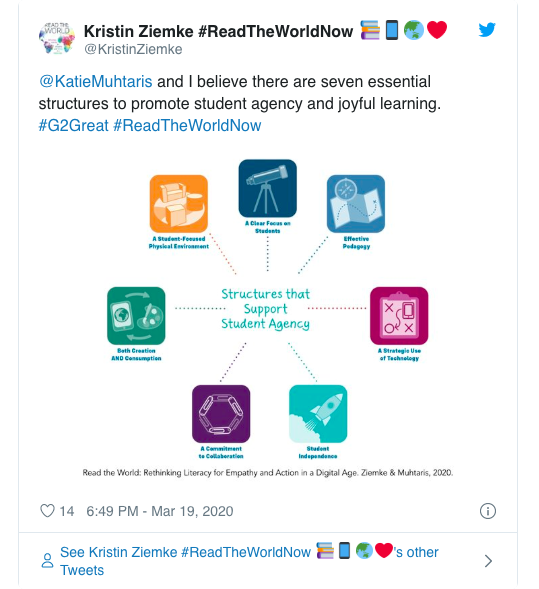
As I reflect on all that will change in the weeks to come, away from my students and I work to figure out how best to keep providing them with quality learning opportunities and chances to grow I worry that the biggest piece they are going to miss is our look at the world. I hope that I have prepared them enough to continue to seek out voices that are different from their own, to be inquisitive and explore the world that is within their reach with the opportunities that digital media and literacy can bring them. I say all this and still, worry, I worry that not all students will have these opportunities and that I am not sure how that equity gap is overcome. I worry in a world that is becoming ever more digital that my students don’t always have the means to access these tools. I am grateful for the opportunity to chat this week over these topics.
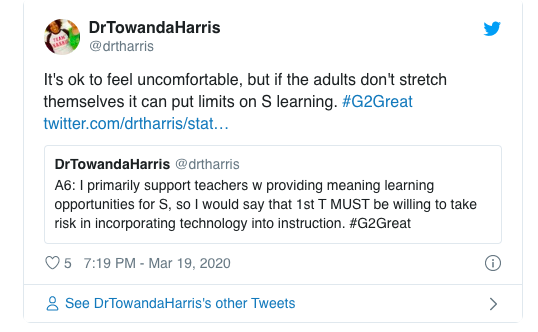
Despite all of this craziness, the chaos that we seem to have been thrust into one thing remains the same. We are here for kids.
3) What is a message from the heart you would like for every teacher to keep in mind? We’re here for the kids. Each and every one of them. The ones that look like us and the ones that don’t, the ones we adore and the ones that challenge us. We have to be our best selves for them, that takes work. It’s okay to be vulnerable, it’s okay to shift our thinking and be more open, it’s okay to step back and be a learner.
We have a challenge ahead but I think the more tools we have in our toolbox to face these challenges the better prepared we will be to meet them. Our students will be better prepared and we will hopefully come out on the other side more prepared for an ever-changing world of education.
I am grateful for the opportunity to reflect on this weeks chat especially in our current reality. As a classroom teacher, I am worried, we can’t know with certainty what is coming next but we do have a choice. We can learn to adapt to the new reality or we can continue to hold to what we have done in the past. The thing is the world is not waiting for us and now more than ever that is true.
Links to learn further
Link to the book https://www.heinemann.com/products/e10891.aspx
https://www.kristinziemke.com/
Blog Postshttps://blog.heinemann.com/plc-read-the-world-digital-age-literacy-action
https://blog.heinemann.com/helping-students-move-beyond-binary-thinking-in-our-digital-age
https://blog.heinemann.com/making-a-commitment-to-collaboration
Read the World Rethinking Literacy for Empathy and Action in a Digital Age by Kristin Ziemke and Katie Muhtaris (Heinemann)
